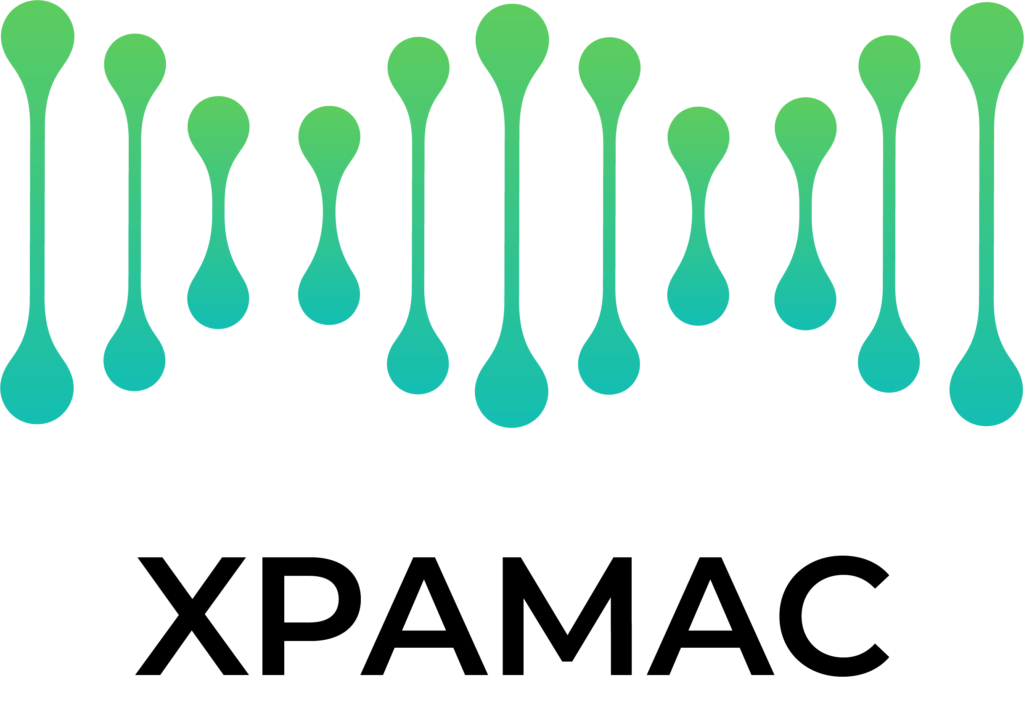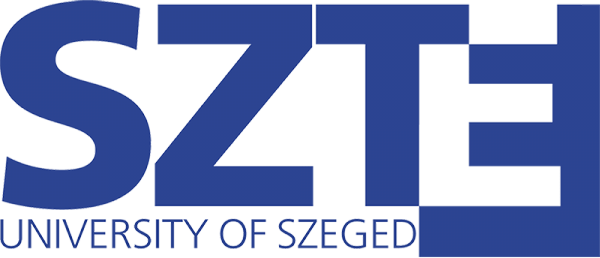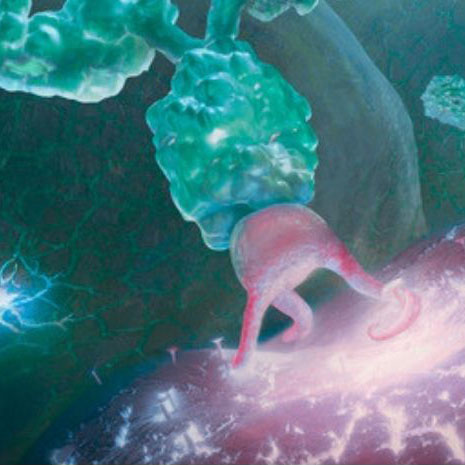Intracellular Delivery of Protein Therapeutics
Engineering therapeutic proteins (antibodies, intrabodies, nanobodies, etc.) for cytosolic delivery at nanomolar concentrations using our patented Intracellular Delivery of Protein Therapeutics (IDPT) technology. A unique feature of our technology is the cytosolic enrichment to clinically relevant (up to low micromolar) concentrations.


About Us
Viabrane is a dynamic spin-off venture based in Szeged, Hungary, established through a collaboration between the University of Szeged, Vespucci Partners VC, and private investors, including technology experts.
Viabrane Inc. maintains a strong partnership with Xpamac Inc. The company leverages cell lines expressing recombinant monoclonal antibodies (mAbs), engineered by Xpamac Inc. using its innovative Mammalian Elongated Chromosome (MEC) technology.

The University of Szeged, ranked among the top 10% of universities globally, has a rich history of excellence, including contributing Nobel Prize winners to the scientific community.

Platform for Delivering Therapeutic Proteins into the Cytosol at Clinically Relevant Concentrations
There is a pressing need for methods delivering therapeutic macromolecules to their intracellular targets at clinically relevant concentrations without endosomal entrapment. Certain viruses and bacterial toxins exploit lipid raft-mediated endocytosis to internalize macromolecules in their functional form without degradation, which we set out to mimic in our approach. These proteins of viral and bacterial origins trigger the desired intracellular delivery by binding to glycolipid receptors at the lipid raft entry points.
We discovered a pentapeptide sequence that specifically captures the lipid raft marker glycolipids. Thus, it triggers endocytosis on various human live cell lines. The cargo-loaded endosomes show limited fusion with lysosomes. Several immunoglobulin G complexes were successfully delivered into live cells at extracellular concentrations ranging from 20 to 160 nM. At 100 nM extracellular concentration, the cytosolic enrichment led to low micromolar cytosolic concentration. The antibodies’ molecular recognition regions remained functional, and the escape of the functional cargo protein to the cytosol was observed without any additional endosomal escape sequence. The carrier tag was not toxic even in the high micromolar region.
T.A. Martinek et al. Advanced Science 2020, 7, 1902621.
T.A. Martinek et al. Pharmaceutics 2022, 14, 580.


Unique Solution
VIABRANE is a Key Enabling Technology for Intracellular Application of Protein Therapeutics
Advantages of the technology
- The pentapeptide tag (tag) is the smallest nanomolar endocytosis signal with minimal interference with the cargo
- The tag breaks the carrier-cargo cooptimization paradigm, it internalized a number of antibodies and other proteins efficiently. Unique feature is the cytosolic enrichment to microM concentrations.
- Fast cell line development process within 8 weeks for a tag-fused product with the XPAMAC technology
- Candidate protein therapeutics can be rapidly tested for the intracellular effects with chemical tagging before the specific cell line development of the fused carrier-cargo product
- Low-cost and accelerated screening of protein candidates
- Potentially applicable for nucleic acid therapeutics w/o lipid nanocapsules with the appropriate linker chemistry
Leadership
- Chemist
- PhD in Pharma Sciences
- 20 yrs drug research, protein science and protein mimetics experience
- expert in intracellular delivery of proteins
He obtained his MSc in Chemistry from the University of Szeged, Hungary in 1996. Afterwards he earned his PhD degree at the same university in 2001 under the supervision of Prof. Ferenc Fülöp and with the guidance of Dr. Frank G. Riddell at the University of St. Andrews, UK.
He started his independent career in peptidic foldamers, focusing on their controlled folding and protein mimicry. He is a full professor and the head of the Department of Medical Chemistry at Albert Szent-Györgyi Medical School, University of Szeged, Hungary. He is active in biomimetic self-organizing systems and their applications in drug discovery: endocytotic cell penetration, antimicrobial foldamers, modulation of protein-protein interactions, and light-fueled peptidic replicators. He and his research group discovered a short peptidic tag that binds to the mammalian cell’s lipid rafts and, thereby, induces controlled entrapment-free endocytosis to the cytosol. This method can deliver therapeutic antibodies to the cytosol at low nanomolar extracellular concentrations. Currently, Prof. Martinek is joining forces with XPAMAC Inc. to find therapeutic applications for their cytosolic delivery technology in combination with the XPAMAC cell line development.
- Biotech engineer
- PhD in Biochemistry
- 16 years experience in academia
- 20 years BD experience in biotech and pharma industry
She obtained her MSc in biotech engineering from the Technical University of Budapest, Hungary. Afterwards she worked at the Biological Research Centre, Szeged, Hungary and earned her PhD at the University of Szeged, Hungary in 2009. She spent her post doc years at the University of Szeged, Hungary and at the University of Birmingham, UK.
She started her business development carrier at Solvo Biotechnology in 2006. She moved to Egis Pharmaceuticals (Servier Group) in 2014 where she contributed as a business development professional to Egis’s biosimilar development and to the development of an in vitro diagnostics medical device suitable for the response prediction of RA patients to infliximab therapy before treatment initiation. Later she served as a managing director of PentaCoreLab (Egis subsidiary) during a critical period.
She joined VIABRANE Inc. as a senior scientist supporting several aspects of its operation leveraging on her 16 years’ experience in academia and 20 years’ experience as a business development manager in the biotech and pharma industry.
- Chemist
- PhD in Pharma Sciences
- 20 years drug research, protein science and protein mimetics experience
- expert in intracellular delivery of proteins
She obtained her MSc in Chemistry from the University of Szeged, Hungary in 2001. Afterwards he earned her PhD degree at the same university in 2006 under the supervision of Prof. Ferenc Fülöp and with the guidance of Dr. Tamás Martinek.
She started her postdoc career in protein-ligand interaction, focusing on their drug development. She is an associate professor and the leader of the NMR Laboratory at Albert Szent-Györgyi Medical School, University of Szeged, Hungary. She is specializing in protein-ligand interactions, the development of intracellular transport systems, and the design of bioactive conjugates. She is a co-inventor of a short peptidic tag that binds to the mammalian cell’s lipid rafts and, thereby, induces controlled entrapment-free endocytosis to the cytosol.
Scientific Advisory Board
- Doctor of Medicine, GMC registered in UK
- Medical & scientific affairs, clinical development, international R&D collaborations
- Over 25 years in multinational pharmaceutical and biotech industry
Dr. Turgonyi is Chair of Scientific Advisory Board of Viabrane. She is a senior pharmaceutical physician and leader with a wealth of experience in medical affairs, clinical development, R&D collaborations and policy shaping, medical evidence generation, including global phase III studies and international disease registries. She has developed global medical strategies and launches for several blockbusters and worked with top medical experts and institutions to co-create innovative health solutions in multiple therapeutic areas.
Dr Turgonyi has held positions at AstraZeneca, Pfizer, and Sanofi Aventis and biotech start ups at global, regional and local levels in Gulf Countries Cluster, UK, Ireland, Poland and Hungary.
She obtained her Medical Doctorate in General Medicine and has a Diploma in Clinical Research and is a registered physician with the General Medical Council in the United Kingdom.
- Doctor of Medicine
- Board certified in internal medicine
- 25 years in multinational CRO, SMO businesses. CEO/owner of CROs and healthcare start ups
He received his medical degree from the Semmelweis Medical University in 1993 and worked for 6 years as a physician and researcher at the National Institute of Cardiology in Budapest, where he obtained his specialist degree in internal medicine. He worked as a research fellow at the University of Parma in 1996. From 1998, he was the founder and for more than 10 years the director of Goodwill Research Ltd., which was mainly engaged in pharmacological and clinical trials. He was the co-founder and later managing director of the Svábhegyi Paediatric Institute, which was reorganized in 2007 and integrated into Doktor24 Medicina Zrt. in 2020. In 2023, as CEO, he restructured Auxiliis Pharma Ltd., which has been involved in clinical research for decades and is currently engaged in biomarker research. Since 2022, he has been leading the Healthcare Innovation and IT section of the National Association of Entrepreneurs and Employers, and is a member of the Healthcare Section’s Board.
Management Consultant
- Successful enterpreneur
- 25+ years experience in building companies
With over 25 years of experience in the leadership of self-owned business ventures and investments in four continents (Europe, Australia, Asia, North America) behind his back, he can confidently say he found his calling.
Taking part in overseeing new, innovative developments in the Real estate, IT, Biotech and Financial industries has been a true passion for him over the years.
He is supporting the establishment of Viabrane Inc. leveraging on his outstanding business and networking capabilities.